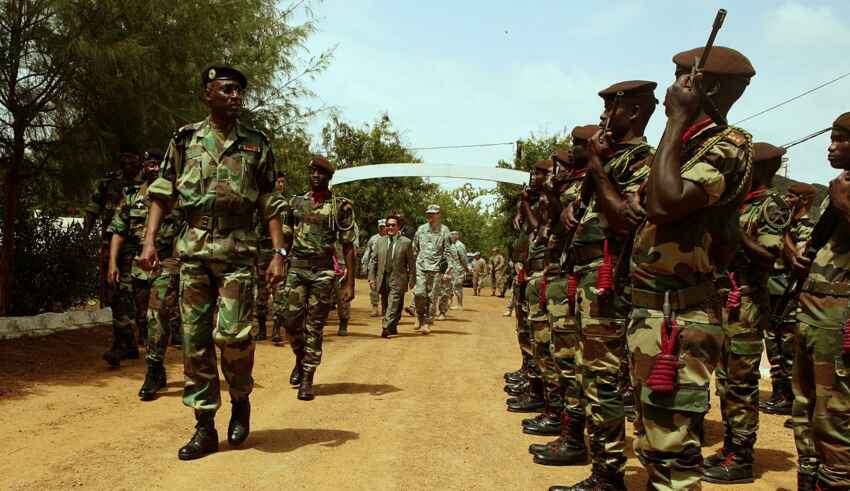
Since 1982, Casamance, a region in southern Senegal, has been the scene of a low-intensity conflict between the government and the rebels of the Democratic Forces of Casamance (MFDC). This is the longest-running armed conflict still active in Africa. One of the most politically stable countries in western Africa is Senegal. The Movement of Democratic Forces of Casamance (MDFC) and the Senegalese military are now engaged in an open struggle that has been going on for 40 years in the southern Casamance region of the country. When street protests erupted in the early 1980s, security forces suppressed them with extreme brutality. A political organization, named “the Movement of Democratic Forces of Casamance” (MFDC), revived old demands for independence and launched a guerrilla insurgency that reached its peak in the 1990s. The uprising is thought to have started on December 26, 1982, when hundreds of people poured into Ziguinchor, replacing the Senegalese tricolor with white flags, and handing out booklets supporting the Casamance region’s independence from the newly constituted MDFC. The Casamance conflict has an ethnic dimension, with the local majority Diora opposing the State, and is one of many civil wars in post-colonial Africa (1).
The conflict in Casamance region has caused tens of thousands of displaced people and nearly five thousand deaths; specifically, many civilians lost their lives from landmines. Nowadays, an estimated 1.2 square kilometers of Senegal’s territory is still contaminated by landmines. After numerous failed negotiations, the conflict in Senegal’s Casamance region has turned into a series of operations carried out by the Senegalese army against the rebels, who are now more focused on the illicit trade in goods such as drugs and timber than on the fight for independence, which was the original cause that started the conflict.
After several years of fighting, the MFDC was split into factions after the death of its commander, Augustin Diamacoune Senghor, in 2007, and its members are now hiding in the dense forests of the region. As stated, the cause for independence recently appears to be less important to the rebels than making money; in particular in the lucrative wood-trafficking industry. Since the conflict began in 1982, Amidou Djiba, who identifies himself as the current MFDF spokesman, claims that Senegal’s Presidents have tried a variety of approaches to put an end to the armed confrontation “from the hard hand of military operations, through corruption, to the promises of development, but no one has ever achieved its purpose” (2).
The Casamance region used to be considered the “breadbasket of Senegal” given its fertile lands where goods such as rice, peanuts, and cashews are produced, but the conflict has significantly slowed the region’s development. In point of fact, the infrastructure system appears to be inadequate to exploit the region’s agricultural and fishing potential. Moreover, it has to be considered the fact that the Senegalese region here under analysis appears to be threatened not only by the already mentioned illegal fishing and timber smuggling, but climate change is having significant repercussions on the region as well. The local residents’ profit from the underground economy, which is a major source of funding for the conflict.
Activists claim that in order to stop the violence, it is necessary to alter the demeanor of those who gain from the illegal trade in rosewood. The growing of Indian hemp and the smuggling of priceless rosewood into Gambia are both activities closely associated with the rebels. Casamance, which is far closer to Gambia than important Senegalese ports like Dakar, is where the majority of the rosewood shipped via the country comes from. Since 2010, the $10 billion timber trafficking industry has caused Senegal to lose more than 1 million trees. According to the Environmental Investigation Agency, the Gambia, which has a land area of only 11,300 square kilometers, has exported an estimated 1.6 million rosewood trees since 2012. The Gambia proclaimed the West African rosewood tree to be almost extinct in 2012. However, the nation continues to be one of the leading exporters of the species, particularly to China.
It should be specified that from once being one of the most prosperous regions in the country, it is now considered to be the least developed region in Senegal. What has been described is clearly having repercussions on other aspects that are fundamental to the economic and social development of the Casamance region. As a matter of fact, youth unemployment here exceeds 50 percent, which is contributing to more and more reasons for people to leave Senegal, meaning to migrate. In particular, there are considerable migration flows not only to the capital Dakar, but also towards Europe.
Policymakers should care more about the mentioned long-simmering violence in Casamance. It should be specified that this Senegalese region is pressed between The Gambia and Guinea-Bissau, and the Casamance conflict is generating instability in those countries as well. As a matter of fact, these countries have suffered displacement and crime from the Casamance war. It is for such a reason that peace in this conflict would directly benefit the three West African nations (3). In point of fact, enhancing the stability of the Casamance region would strengthen Senegal as an international partner in building peace in West Africa. As extremist violence and coups spread from the Sahel to the coast of West Africa, Senegal is the only country among 15 countries in the region that has never experienced a military coup. It has made important contributions to the United Nations peacekeeping force. Nevertheless, its democracy has suffered setbacks since 2000, and its stability depends on strengthening governance according to the needs of its people. That process will require anti-corruption reforms, a more independent judiciary, and an end to the Casamance uprising, which continues to displace tens of thousands of people, litter farmlands with explosives mines and wreak havoc on Senegal’s economy.
References:
- https://acninternational.org/senegal-40-years-of-conflict-in-the-casamance-region/
- https://www.dw.com/en/rebel-conflict-in-senegals-casamance-region-far-from-over/a-64326724
- https://www.usip.org/publications/2022/08/senegals-war-torn-casamance-dialogue-builds-stability
By The European Institute for International Law and International Relations.













